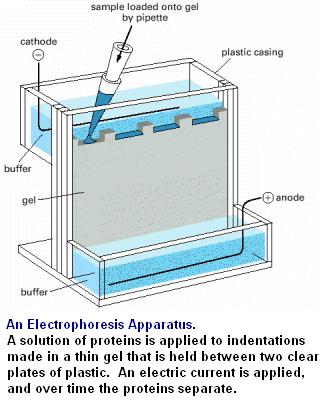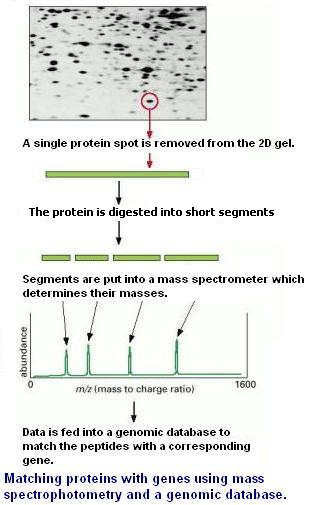| |
A cell contains thousands of proteins. How can each of these proteins be identified? The first step involves the isolation of each protein so that it is separated from all the rest. As shown on the last page, 2D gel electrophoresis is a powerful technique for this purpose.

After protein separation and fractionation, proteins are digested (their internal bonds are cut) by a specific enzyme. The result is a solution of many peptides derived from a single protein.
The molecular weight of the individual peptides can be determined by a mass spectrometer.
One type of mass spectrometer, MALDI-TOF, can produce peptide mass fingerprints. (MALDI-TOF stands for “matrix-assisted-laser-desorption/ionization-time-of-flight).
A fingerprint contains peptides derived from a single protein. The pattern of the peptides in the fingerprint is usually unique to the protein, just like our human fingerprints are unique to each individual person.
|
|
The protein fingerprint can be used to search a protein database that contains all the protein sequences in a particular organism. These protein sequences in the database have mostly been deduced from DNA sequences.
Computer software programs have been developed to make the search easier. The protein fingerprint is input into the program, and the program determines which sequence in the database would produce the same fingerprint as the one submitted.
This technology, developed in the early 1990s, is called peptide mass fingerprinting (abbreviated PMF).

|
|